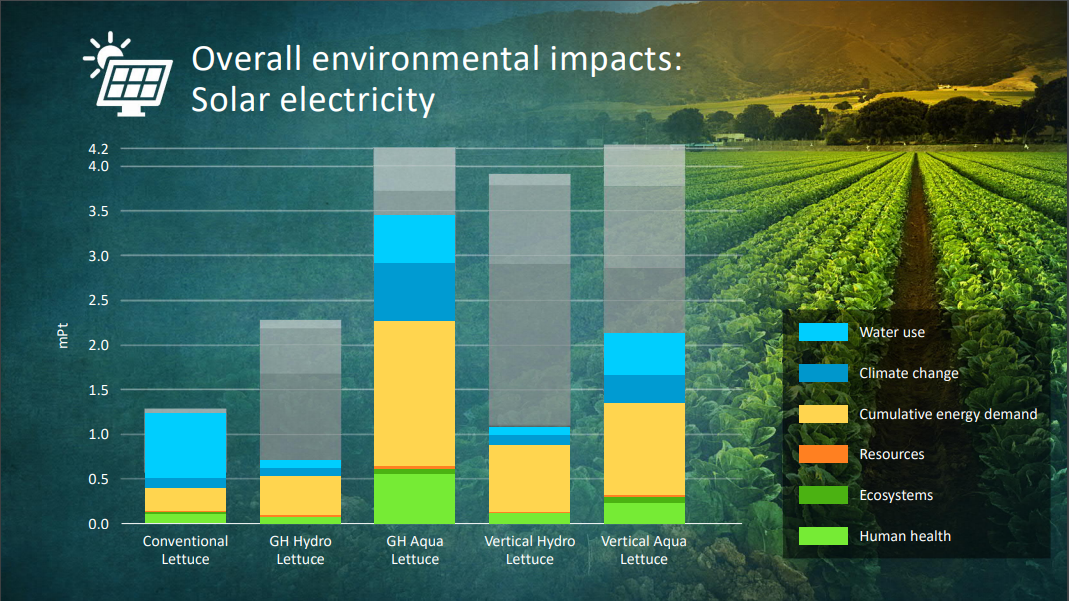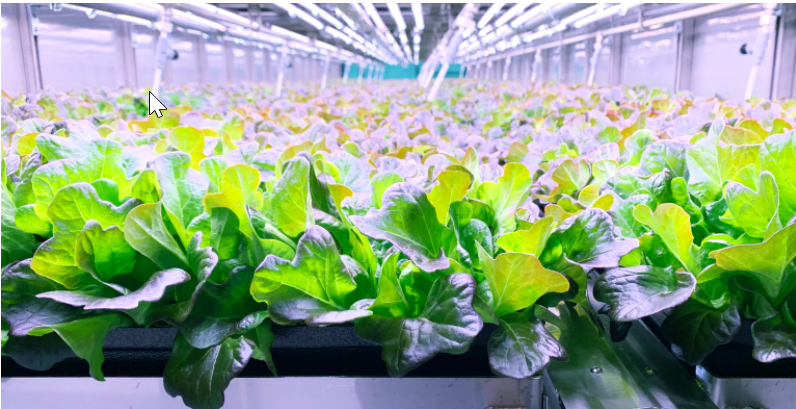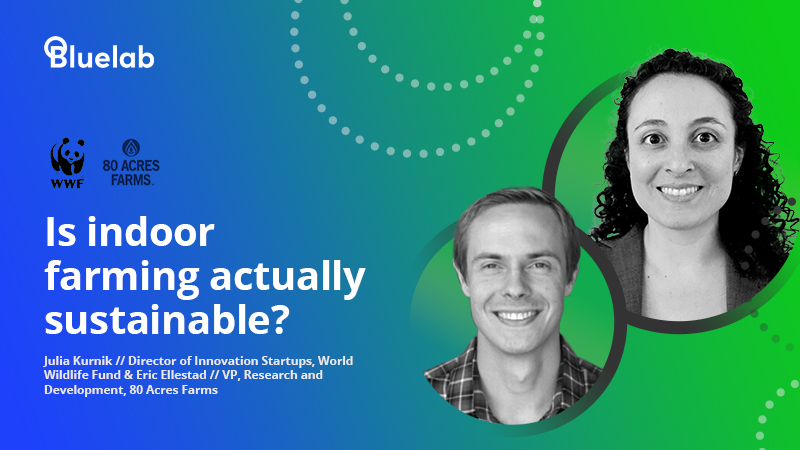Bluelab's Future of Controlled Agriculture webinar series brings the best minds in CEA together to discuss the frontier of horticulture. Our host, Caroline Nordahl, Chief Sales and Marketing Officer here at Bluelab, talks with plant scientists, top CEA researchers, and engineers for a unique lens on what we can expect in the future of CEA.
We talk to Julia Kurnik, Director of Innovation Startups at the WWF and Eric Ellestad, Vice President of Research & Development from 80 Acres Farms for their take on today’s indoor farming challenges, and what solutions are being applied and explored to improve the industry in growing for a healthier world.
Download the full webinar here.
Key takeaways
The WWF see agriculture as an area of environmental concern
You may be wondering why the WWF (World Wildlife Fund) is interested in funding CEA research projects.
Food production already has a huge environmental impact and with the growing global population, there is even more urgency to address the need to of supply food to people whilst minimising the environmental footprint.
The WWF is attracted to the indoor agriculture industry as it presents many environmental benefits, which Julia elaborates on in our interview on the sustainability of CEA.
The industry is in its early stage, so it’s a good time for WWF to come in and lend their resources. The biggest opportunity they see is to help to reduce the energy footprint of indoor farming.
Indoor farming uses a lot of energy, “which is both an environmental concern as well as a financial one” says Julia Kurnik. This is an energy challenge, not only how much energy but also where the energy is coming from.
The graph below shows the environmental impact of growing lettuce in St. Louis, USA. The grey represents the reduction in energy from using a renewable energy resource. In the case of lettuce grown hydroponically, the reduction in units of impact (mPt) could be 74%. (Julia goes into more detail about how they measured impact in the webinar.)

The WWF’s involvement is to help come up with innovative solutions and business models that are environmentally sustainable, socially beneficial, and financially profitable.

“We don’t own anything. We don’t manage anything…success for us is when it can continue to scale and grow beyond us”
—Julia Kurnik, Director of Innovation Startups at the WWF
Indoor farming has the potential to be the most resource efficient type of farming
To test their hypothesis, Julia and her team set up hypothetical indoor farms in St. Louis, USA, and use the model to compare indoor farming with conventionally grown lettuce in California. (In the U.S, California is where most of the lettuce is grown and shipped to St. Louis.)
The four types of indoor agriculture systems being studied are:
- Greenhouse hydroponics
- Vertical hydroponics (using all artificial lighting)
- Greenhouse aquaponics
- Vertical aquaponics
When looking at the amount of energy used for all four indoor farming systems, it is greater than what is used in California. However, the greenhouse gas footprint of a kilowatt of energy used in St. Louis is actually larger than a kilowatt of energy used in California.
This is because California has a fairly clean energy grid where almost half of its energy is renewable. In comparison, St. Louis is coal-heavy and therefore carries a higher environmental impact.
“It’s not just the amount of energy being used, but where that energy is sourced from”
—Julia Kurnik
From their research, Julia and her team confirmed that indoor farming has the potential to be the best option for reduced energy consumption in St. Louis compared to conventional farming when renewable energy sources are used.
If the farming systems sourced their energy from solar power, the hydroponic systems then look favourable as the overall environmental impact drops, becoming lower than conventionally grown lettuce.
When a team like Julia's looks to reduce environmental footprint, they approach from two angles. They look for ways to increase the percentage of energy that comes from renewable sources alongside reducing energy use.
What are the renewable energy solutions explored by the WWF?
1. Underwater wind turbines
Underwater wind turbines are an exciting new technology in development but not yet economically viable due to high installation, material and maintenance costs.
2. Solar power
Solar power is the most positive solution but with the limitations of upfront costs and space. Julia says, "the number of solar panels needed to run a very large farm would far dwarf the size of the farm.”
3. Food waste
This concept reduces both food waste in landfills along with its methane emissions plus creating a clean energy source. Julia says you could “take any kind of food waste, not just things that are compostable.”
Download the full webinar to hear Julia's assessment of the best approach.
Reducing energy use stranded assets
Julia's team is exploring solutions that will reduce the amount of energy use. A large percentage of an indoor farm's energy footprint comes from cooling, often using an air conditioning system. There are alternatives, the most positive explored in the research are:
1. "Stranded assets” like retired coal plants
St. Louis has a number of coal power plants that will be retired in the future and many of them use the Mississippi River to cool the plant. The idea here is to repurpose the existing infrastructure to cool the farm.
2. Abandoned mines
“There's about half a million abandoned mines across the US alone, not to mention the rest of the world”, says Julia. Vertical farms create a fair amount of excess heat from both direct and indirect lighting so end up needing air conditioning. As mines are underground, they are naturally cooler so the need for HVAC is mitigated.
3. Co-locating CO2
Instead of trying to reduce the energy use, the concept is to use more CO2 to increase crop yield by capturing CO2 that would otherwise be going to the atmosphere. The CO2 can effectively be repurposed, decreasing the energy emission per pound of produce grown.
Beyond leafy greens—how 80 Acre Farms grows no sunlight tomatoes
When it comes to our food supply chain, a lot has changed in 10 years. 80 Acre Farms is leveraging those changes from energy use through to packaging.

“80 Acres was founded with the mission to build a better food system” states Eric Ellestad, Vice President of R&D for 80 Acres Farms. It's a bold and commendable goal. To achieve this, they’re looking at localised food production by implementing modern technologies to create a new system to grow food that is sustainable and economical. All whilst reducing the consumption of production.
When Eric first started working in vertical farming 10 years ago, commercial horticulture LEDs had only recently been introduced. They were expensive, inefficient and had no wavelength control. They have come a long way since then as technology has evolved to create energy-efficient lighting systems.
-png.png)
“We continue to get better with the technology, the cost of LED lights and the cost of the rest of the technology continues to go down. So, it's becoming more affordable to build a highly efficient indoor farm.”
—Eric Ellestad, Vice President of R&D for 80 Acres Farms
From science fiction to reality: No sunlight tomatoes and berries
Vertical farming is typically limited to growing leafy greens for economical and biological viability reasons. “It’s almost impossible to grow tomatoes indoors. And, as you can see, we've been able to do it. It's all about the LED lights above us. It's all about making sure that you have nice laminar airflow so the plants can breathe,” says Eric.
80 Acre Farms is the first to grow tomatoes in a complete indoor environment with artificial lighting. It has taken them years to achieve what they have done and now they can build these farms anywhere in the world regardless of the climate and produce phenomenal quality crops.
“Vertical farming has arrived and to push the industry to push other pioneers in the space to do more than leafy greens”.
—Eric Ellestad
Plastic packaging is the elephant in the room
80 Acre Farms is constantly striving to improve themselves as they benchmark and hold accountability against the relevant Farm Tech Society (FTS) 17 sustainable development goals. Some of these include zero hunger, increasing access to fresh healthy food and creating sustainable cities.
“It's hard to talk about sustainability and food without acknowledging the plastic, which is kind of the elephant in the room. A lot of the time selling to retail, it's hard to not use plastic. But you can reduce how much you use, design your products using post-consumer recycled plastic that is biodegradable”.
—Eric Ellestad
It is evident there is much growth ahead for this industry as it moves forward in tackling some of today’s challenges and global concerns. No cookie-cutter solution is available to stamp these out but requires more of a broader and community approach in creating an ecosystem that will help pave the way. No doubt we will be seeing some exciting advances as technology and shared knowledge in this industry continues evolving.
Download the full webinar on-demand by clicking the image below.



%20(1).png?height=100&name=Blog%20Author%20Bio%20Image%20500x500%20(2)%20(1).png)


Submit a comment